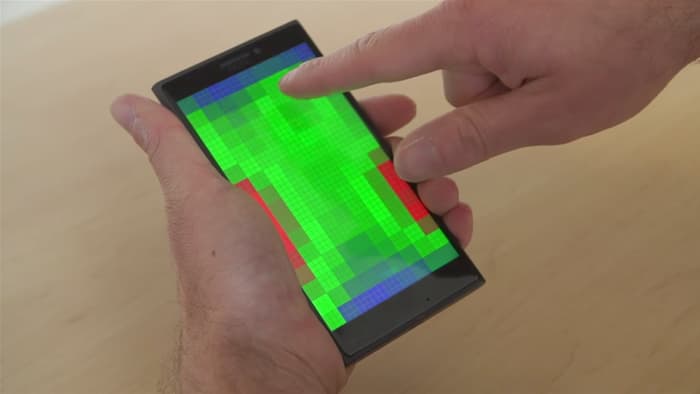
Microsoft Research is attempting to create a touchscreen that users won’t even need to touch. While Apple works on enhancing its touchscreens with 3D Touch, its Redmond, WA-based competitor has focused on developing a pre-touch sensing prototype smartphone. The model can trigger different types of interactions based on how a consumer holds the phone and where his or her fingers are without touching the glass.
In the past, consumer electronics developers like Samsung and Sony have tried out similar technology, but nothing larger scale ever fleshed out. Sony’s “Floating Touch” platform ultimately had limited software support, while Samsung only did something similar with its Note styluses. Neither was well executed, and neither caught on.
Conversely, Microsoft’s developers only have to work with one of the two basic types of capacitive sensors found in touchscreens – self-capacitance sensors (the other type, standard mutual capacitance sensors, is found in other screens). Self-capacitance sensors can support multi-touch gestures without wearing out, while mutual capacitance sensors use more power to determine touch points. The former also have high sensitivity – easily detecting a finger that is an inch or two above the screen – and help Microsoft attain what seems to be the first time pre-touch sensing and grip detection have worked together.
“It uses the hands as a window to the mind,” said Ken Hinckley, a principal researcher at Microsoft who led the project.
The test device is already capable of pulling up video controls and showing hyperlinks when a user’s fingers hover over the screen; instead, its exemplary feature is that of grip sensing. The sensors can map multiple inputs, meaning that the phone can tell how someone is holding it, and it can call up different controls when it senses a presence. The sensing system combines touch and hovering detection to deliver content menus in a convenient spot for a finger.
As seen in the demo video, the touchscreen can differentiate between rapid and precise motion before someone taps, allowing the phone to realize the purpose of the tap. If precise motion precedes a swipe, then it is likely that a user meant to select text rather than scroll through a page. This feature reflects Microsoft’s suggestion that pre-touch and traditional touch commands will be combined to create more comfortable uses of devices.
“I think it has huge potential for the future of mobile interaction,” said Hinckley. “And I say this as one of the very first people to explore the possibilities of sensors on mobile phones, including the now ubiquitous capability to sense and auto-rotate the screen orientation.”
Source: ExtremeTech, Gizmag, Microsoft Research Blog, DesignNews
Advertisement
Learn more about Electronic Products Magazine





